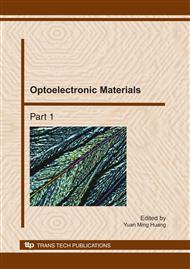p.918
p.922
p.926
p.930
p.934
p.939
p.943
p.947
p.952
Molecular Simulation of Hydrogen Storage on All-Silica ZSM-5 Zeolite
Abstract:
Grand Canonical Monte Carlo (GCMC) method was employed to simulate the adsorption properties of molecular hydrogen on crossing the critical temperature in all-silica ZSM-5 zeolite in this paper. The results indicated that the adsorbed amounts of hydrogen increased with decreasing temperatures and increasing pressures. The highest hydrogen uptake value is 2.24 wt% at 25 K and 10000 kPa. By comparing the variation of the hydrogen adsorption isotherms on crossing the critical temperature, it is shown that the micropore filling and capillary condensation were the main adsorption mechanism under the critical temperature of hydrogen, and the micropore filling was the adsorption mechanism above the critical temperature. The results and data of hydrogen adsorption properties obtained from the simulations are theoretically significant for understanding of the mechanism of hydrogen storage on microporous zeolites.
Info:
Periodical:
Pages:
934-938
Citation:
Online since:
November 2010
Authors:
Keywords:
Price:
Сopyright:
© 2011 Trans Tech Publications Ltd. All Rights Reserved
Share:
Citation:


